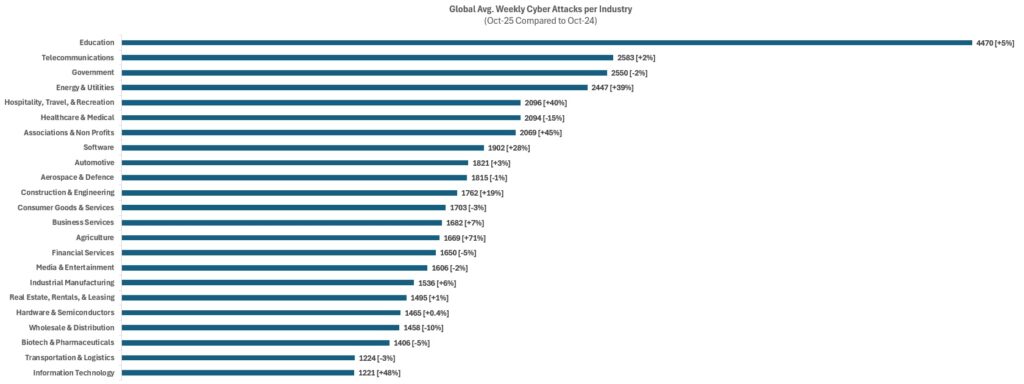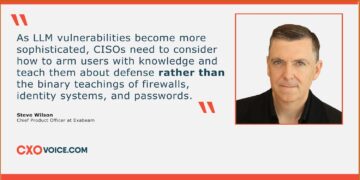Check Point Research, the Threat Intelligence division of Check Point Software Technologies Ltd, has released its Global Threat Intelligence Report for October 2025. The report shows that organizations around the world faced an average of 1,938 cyberattacks per week. This is a 2% increase from September and a 5% rise compared to the same time last year, indicating a growing threat from cyberattacks due to the rise of ransomware and risks associated with Generative AI (GenAI).
GenAI Growth Increases Data Exposure Risks; Education Sector Remains Most Targeted: As the use of Generative AI tools quickly increases in businesses, Check Point Research has found a greater risk of exposing sensitive data.

In October, 1 out of every 44 GenAI prompts submitted from company networks had a high risk of causing data leaks, affecting 87% of organizations that regularly use GenAI.
Additionally, 19% of these prompts contained sensitive information like internal messages, customer data, or proprietary code.
The risks align with an 8% increase in daily usage among corporate users. There has been a significant rise in the exposure of source code and credentials compared to other types of data, such as personally identifiable information (PII) and financial data.
Even though some usage is through managed tools, organizations typically use an average of 11 different GenAI tools each month, many of which may not be supervised.
The Education sector was the most targeted globally, facing an average of 4,470 cyberattacks per organization per week, which is a 5% increase year-over-year.
The Telecommunications industry followed with 2,583 weekly cyberattacks (+2% YoY). Government institutions experienced 2,550 cyberattacks per week (–2% YoY).
Additionally, the Hospitality sector saw a significant 40% increase year-over-year, moving from 8th to 5th among the most attacked industries as the holiday season approaches.
Region-wise, Latin America reported the highest number of cyberattacks, with an average of 2,966 per organisation per week (+16% YoY). Africa followed with 2,782 attacks (–15%), and the APAC region had 2,703 cyberattacks (–8%). Europe experienced a moderate rise of 4%, while North America saw the steepest rise, with an 18% growth year-over-year, largely due to heightened ransomware threats.
Ransomware Threat Landscape: 48% Increase Year-over-Year: Ransomware continued to be one of the most serious cyber threats, with 801 publicly reported incidents worldwide in October, marking a 48% increase compared to last year. During this time, the APAC region accounted for 8% of global ransomware victims, while North America had the highest number with 62% of reported cases, followed by Europe with 19%. In North America, the United States alone represented 57% of all global incidents, with Canada at 5% and France at 4%.
By industry, the most affected were Business Services (12%), Consumer Goods & Services (10.5%), and Industrial Manufacturing (10.4%).
The leading ransomware groups in October consisted of Qilin (22.7%), Akira (8.7%), and Sinobi (7.8%), which were responsible for nearly 40% of reported attacks.
Also Read: Top 10 agentic AI threats, and how to defend against them























